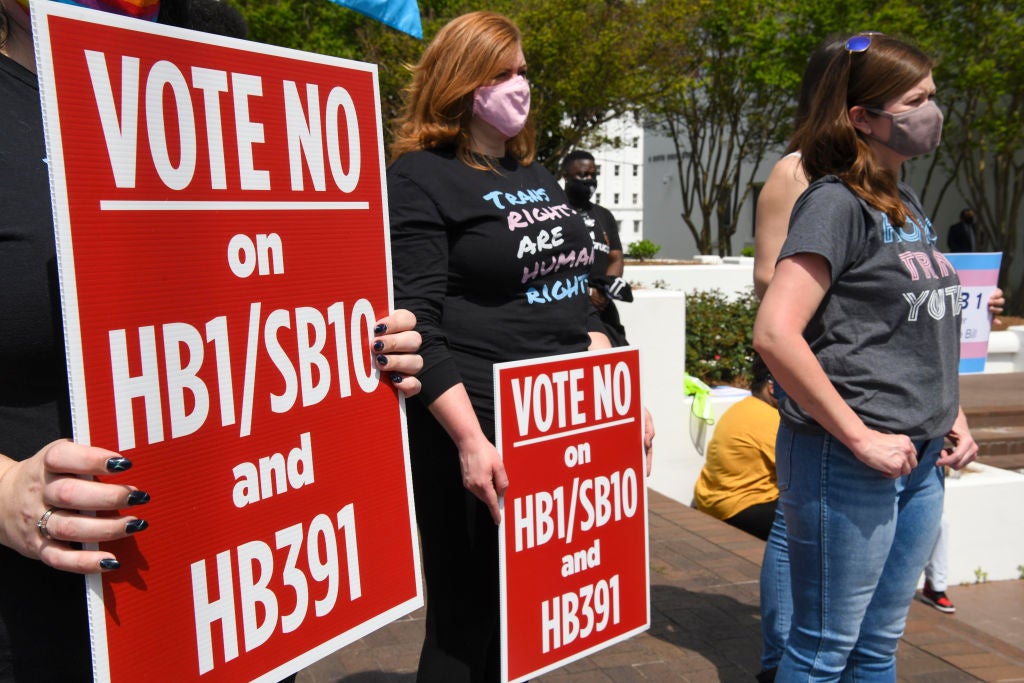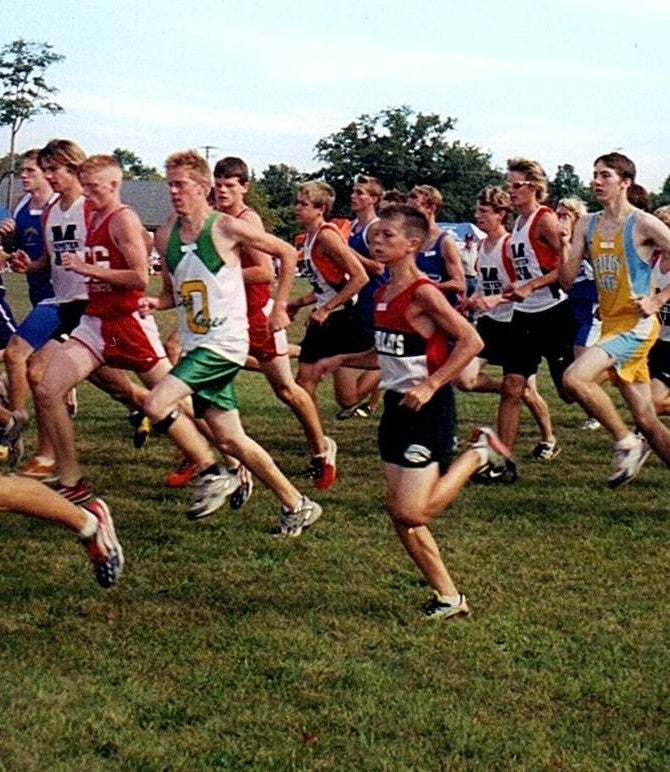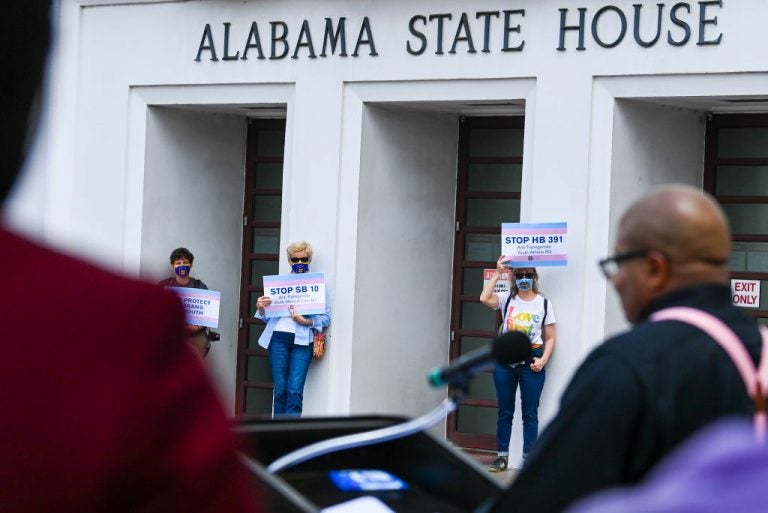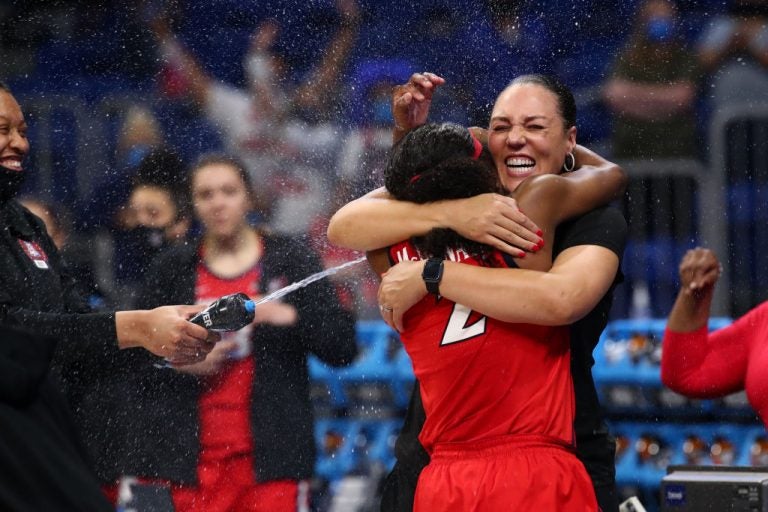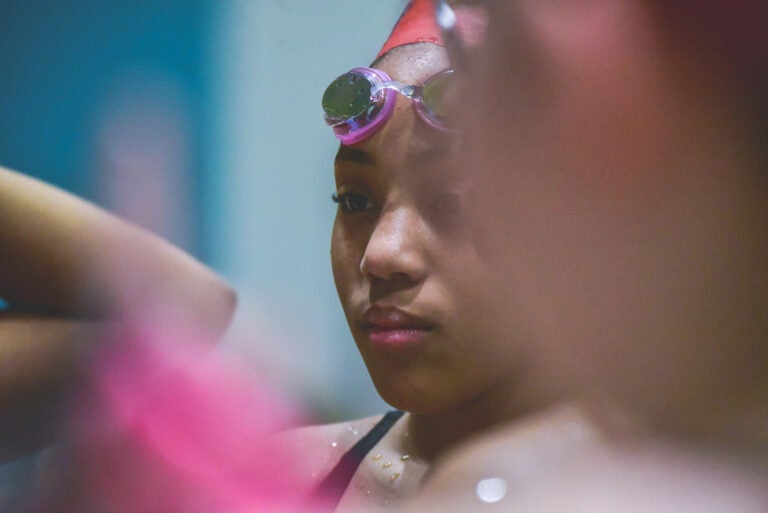GSI Poll: So You Think You Know About Transgender Athletes...
Why this matters
Amid a wave of legislation targeting transgender athletes, a new national poll from the Global Sport Institute at Arizona State University indicates that the American public lacks certainty and consensus on the topic.
In the first few months of 2021, approximately 35 bills were introduced at the state level that would limit or prohibit transgender kids and young adults from competing in sports. With pieces of legislation titled “Save Women’s Sports” or “Protect Women’s Sports,” lawmakers have painted a picture of an existential athletic crisis, arguing that trans athletes who identify as women have an inherent and unfair competitive advantage over cisgender women and girls – that is, those who identify with the sex assigned to them at birth.
Though the state legislators behind these bills often have been unable to point to any examples of trans girls causing problems by participating in sports – or even to any publicly out trans athletes in their states – they nevertheless have been moving forward with their proposals, which have been criticized by LGBTQ advocacy groups and others as discriminatory against trans people and rooted in unsubstantiated assumptions about sports performance.
Largely missing in the debate? A clear understanding of public opinion on this issue. In April, a PBS NewsHour/NPR/Marist poll found that two-thirds of Americans are against laws that would limit trans rights in general. To better grasp what the public thinks about trans athletes in the context of sports, Arizona State University’s Global Sport Institute partnered with OH Predictive Insights to conduct a national survey in May.
Collecting answers from 1,800 Americans selected to demographically align with the most recent U.S. Census numbers, the GSI/OH Predictive Insights survey reveals that people’s views on trans athletes competing in sports are both varied and complicated:
- About 41% of respondents believe that refusing to allow transgender athletes to compete in the category of their gender identity would harm them mentally or emotionally. That percentage jumps up to over half in the two youngest age brackets (18-34 and 35-44).
- Only 10% of respondents thought that transgender people should be banned from sports, while the remaining participants were divided as to how trans youth should be allowed to compete.
- About 49% of respondents thought allowing trans girls to compete in girls sports would have a negative impact, while that percentage for boys sports was lower, at 40%.
The Results
While a Gallup “Values and Beliefs” survey from this year showed that over half of respondents thought it was acceptable for transgender athletes to compete only according to their assigned sex at birth (63%), the GSI/OH Predictive Insights poll sought to gauge the public’s basic knowledge of trans identity as it interacts with their stance on transgender athlete participation.
To do this, poll participants first self-reported whether they had “a good understanding of transgender issues.” About 47% of people agreed that they did. However, in a subsequent definitions matching exercise for terms like “transgender boy/man” or “gender” vs. “sex,” even those respondents who believed themselves to be well-versed in this topic were no more likely to select the correct answer.
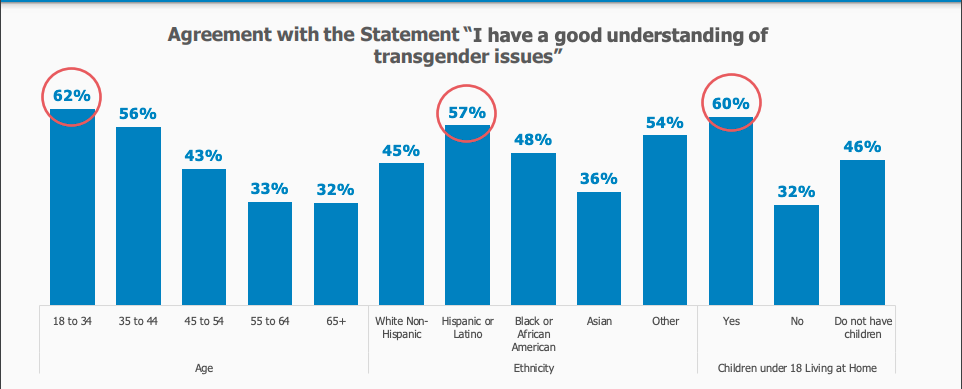
About 30% of respondents agreed that transgender athletes should be able to compete according to gender identity regardless of assigned sex at birth. Meanwhile, 32% said that trans athletes should compete in their assigned sex at birth, and 28% said that they were in favor of two additional categories: one for transgender boys and one for transgender girls. Only 10% of respondents supported an outright ban of all trans athletes.
A regional breakdown of these results roughly aligns with the state legislation introduced this year. Respondents in the Southeast, Southwest, and Midwest showed more support for requiring athletes to compete according to their assigned sex at birth, while respondents in the Northeast and on the West Coast showed slightly higher support for allowing athletes to compete according to gender identity.
Respondents from ages 18 to 44 were slightly more likely than other age groups to support competition according to gender identity. This group also was more likely to agree or strongly agree (53%) that withholding the opportunity to compete in a category because of gender identity has the potential to cause mental and emotional harm to athletes.
Related: OHPI/GSI Poll Data Show Fans Overestimate Number of Minority Head Coaches in the NFL
In addition, younger, more affluent people living in urban areas were more likely to report that they had competed with a transgender athlete – 25% versus the 14% of overall respondents – rather than having only read or heard about trans athletes through media. This finding may help explain why younger respondents were more open to and supportive of trans sports participation.
“We know from social science research that personal relationships – and even casual interactions – between cisgender people and transgender people are likely to positively impact cisgender Americans' opinions toward transgender rights,” says University of Massachusetts, Amherst professor Libby Sharrow, whose research focuses on sex and gender in American politics and the politics and history of Title IX.
Some political analysts view the current wave of state-level transgender athlete proposals as a way for conservative lawmakers to create an expedient “wedge issue,” similar to previous legislative efforts that sought to require trans people to use the bathroom of their assigned sex at birth. The GSI/OH Predictive Insights poll found that 45 percent of respondents agreed with the statement “I am concerned about the presence of transgender athletes” in sports locker rooms, indicating a level of anxiety connected to bathroom-like spaces. The level of agreement with that statement was even higher among respondents who had children living at home; similarly, 35% of those respondents either agreed or somewhat agreed with the statement that transgender athletes in sports are a “widespread issue.”
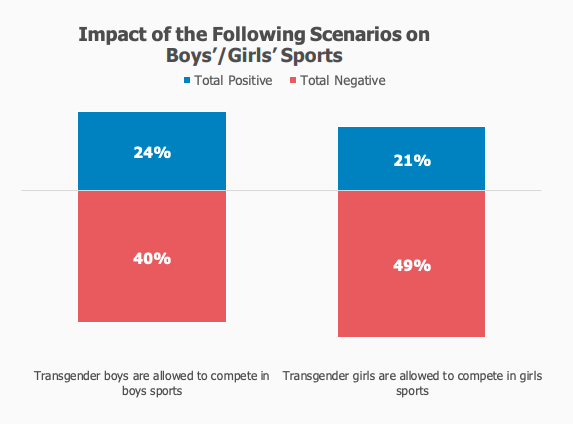
The survey also found that Americans are both concerned and confused about allowing trans boys to participate in men’s sports. While 49% of respondents said that they were worried about the negative impact of allowing trans girls to compete according to gender identity, 40% said that they were worried about trans boys being able to do the same. However, when presented with a scenario in which a trans boy is made to continue competing on a girl’s team because of their assigned sex at birth – which happened to Texas high school wrestler Mack Beggs – only 28% percent of respondents expressed support.
The Analysis
Taken together, the results of the GSI/OH Predictive Insights poll suggest a disconnect between the American public’s mixed and sometimes contradictory views on trans athlete sports participation and current legislative proposals to limit that participation.
The poll and others like it do not show widespread support for laws that specifically restrict trans athletes. Nor do they indicate overwhelming public concern about the topic. So why are some politicians so keen on introducing new laws? Are they truly interested in “saving women’s sports,” a goal that otherwise attracts little legislative interest? Or are they simply demonstrating a deep discomfort with trans people?
These proposals also can be viewed as the latest chapter in a long history of policing and placing caps on the athletic potential of female athletes, often in the name of “protecting” them. Since the early years of elite women’s sports in the 1920s, participants who excelled have faced scrutiny about whether or not they were “really a man” – and since the late 1960s, sex testing of female athletes via chromosome screening, anatomical checks, or hormonal surveillance has occurred at the international level of competition.
Related (Opinion): Discriminatory Sports Laws Hurt Trans Girls–and Cis Girls, Too
Today, the exclusion of women athletes over testosterone levels, which has ensnared Olympic gold medalist Caster Semenya and many other women of color from the Global South, remains a contentious public debate and is viewed by many as a violation of human rights. The current debate over trans athletes, which disproportionately focuses on a small number of Black trans girls, arguably continues the historical trajectory of governing bodies intervening and attempting to control women’s sports when female athletes perform too well. Invasive measures to “verify” the sex of any female athlete, whether she is trans or cisgender, have made it into many of the legislative actions we’ve seen in 2021 – requiring a physician’s documentation of anatomy, chromosomes, and hormone levels of any girl or woman who faces scrutiny over gender and sex. This essentially adopts a highly criticized practice from professional-level sports into collegiate and youth sports levels.
While the lawmakers behind these proposals seem exclusively concerned with the purported negative effects of trans athlete participation on cisgender athletes, they appear to be far less concerned than the public with the actual negative effects of limiting participation on trans athletes. Competing based on birth sex or creating separate gender categories for trans athletes is ostracizing and isolating. It can validate the kind of bullying, harassment, and violence that trans youth – particularly Black, indigenous, and trans youth of color – already face in their school environments.
Multiple studies of teen suicidality have shown that trans youth are far more likely to think about or attempt suicide than their cisgender peers: Roughly half of transgender or gender non-binary kids report suicidal thoughts or attempts. There is also clear data that LGBTQ youth, and transgender youth specifically, are kept out of sports by hostile team atmospheres or a lack of inclusive policies. Surveys of LGBTQ athletes, like a study conducted by the Human Rights Campaign, have indicated that locker rooms are particularly unsafe places for queer and trans athletes. The University of California, Los Angeles’ Williams Institute found that 70% of trans people have reported harassment in restrooms and changing facilities, and that 9% of that group said they have suffered physical violence.
Meanwhile, there are clear benefits to psychological well-being for trans youth and adults who participate in sports. Allowing people to compete in accordance with their gender identity allows and encourages them to enjoy these benefits; passing laws to the contrary creates additional barriers to doing so.
Related: Is 2021 the Year for Women and Girls Sport?
Overall, the GSI/OH Predictive Insights poll offers new insight into public opinion on transgender athletes, spotlighting gaps in general knowledge about trans identity, a mix of support for and opposition to restricting sports participation, a large amount of uncertainty, and a significant – but hardly overwhelming – level of concern. What the survey doesn’t offer is the lived experience of trans athletes who have to shoulder the daily experience of fighting for acceptance and to participate in sports in accordance with their gender identity.
CeCé Telfer, the first out transgender woman to win a NCAA track and field championship, recently told The New York Times that efforts to restrict trans athletes were giving her extra motivation to qualify for this month’s U.S. Olympic trials. “It’s important for me to do it for these kids,” she said. “It’s important for me to do it for my people – whether it be women, Black people, transgender people, LGBTQ people – anybody who is scrutinized and oppressed.”
Lawmakers and the public alike have the power to relieve – or perpetuate – these feelings for trans people in all aspects of life, including sports. Time will tell which path they end up choosing.
Monthly Issue
Beyond the Binary in Sport
The spectra of sex, gender, and sexuality challenge our traditional understanding of sport and competition, but are increasingly central to the conversation around athlete and fan experience.
With legislation and organizing increasing around how these various identities intersect, sport makes a natural landscape for discourse and broadening our knowledge of these conversations. How are perspectives changing, and what can we discover by diving into the multitudes underneath these nuanced topics?
Related


